During World War II, large and small German companies became cogs in the Nazi terror machine. It was no different with certain manufacturers of sports footwear, whose global conflict led to the start of ... a personal war. This is how the legendary Adidas and Puma shoes were made.
Herzogenaurach is a small Franconian city whose inhabitants more than seventy years ago split into two feuding camps. The cause of the conflict were ... sports shoes and brothers:Adolf and Rudolf Dassler.
A brotherly bond
Adolf Dassler, born in 1900, was considered a quiet and secretive young man. He was the youngest of four children of Christoph and Pauline Dassler. "Adi" - as his friends called him - he devoted almost all his free time to sports activities. In 1913, he went on an internship to a bakery, but on the very first day he realized that this was not the way. Young Dassler preferred to DIY and build equipment that would later facilitate his competition.
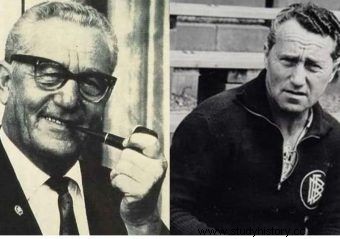
Rudolf (Puma) and Adolf (Adidas) Dasslers
Adolf had a brother, Rudolf, two years his senior, who was his complete opposite:outgoing, outspoken and stubborn, he could deceive anyone. The peaceful lives of both were interrupted by the outbreak of World War I and their appointment to the army.
After the end of the conflict and his return to his homeland, "Adi" decided that he would use the laundry room run by his mother and the footwear knowledge that his father had passed on to him, and opened a shoemaker's shop. It was the beginning of 1920.
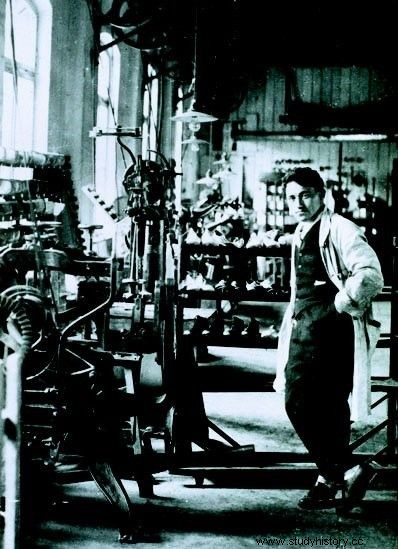
Adi Dasller in his first factory
The company prospered quite well. Adolf, in addition to routine shoe repairs, tried to create his own innovative sports footwear:for football, tennis or running. After four years, he offered Rudolf cooperation, as he could not cope with all his duties. On July 1, 1924, Gebrüder Dassler Sportschuhfabrik was founded - their joint venture.
The brothers shared their assignments. Adolf was in charge of the production, and Rudolf, thanks to his innate commercial talent, promoted and distributed the goods. In the first years, the Dasslers employed twelve people who could produce fifty pairs of shoes a day. These numbers increased significantly when the older brother managed to convince a dozen German athletes to use their equipment. In the shoes of the brothers, she ran, among others Lina Radke, Olympic champion and world record holder in the distance of 800 meters from 1928.
Shoes worthy of the "master race"
In 1933, Adolf Hitler seized power in Germany. Sport played an important role in the Führer's propaganda machine. Aware of the new situation, the clever Dasslers decided to join the NSDAP in the same year. This procedure was to allow them to reach great celebrities with their equipment. Politics didn't interest them so much. Business mattered, the best example of which were the events of the Games of the XI Olympiad in Berlin in 1936.
It was supposed to be a celebration of the "master race." The Nazis intended to prove their superiority to the world through sports rivalry. As party members, the brothers could easily enter the Olympic stadium. Adolf decided to use it - he packed a few pairs of spiked shoes into a suitcase and went to the athletes. At one point, he came across a black American sprinter, Jesse Owens. After a short conversation, he persuaded him to run in his shoes. How did it end? The American won four Olympic gold medals in Berlin and played Hitler on the nose. In German shoes.
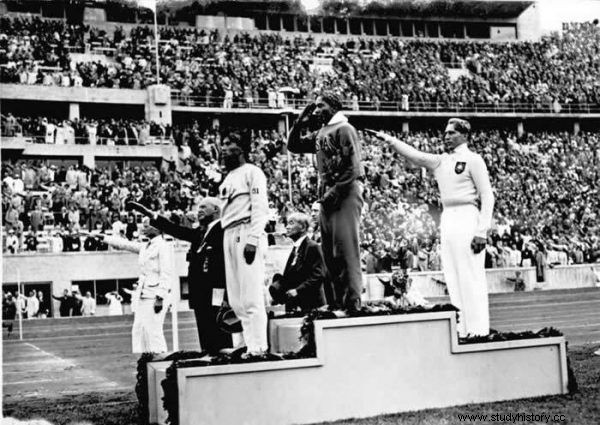
Jesse Owens competed at the Berlin Olympics in 1936 wearing Adidas shoes.
After the Olympics, the brothers' equipment became a "hot commodity" thanks to the first-ever film coverage. Athletes believed that he was the best, as evidenced by growing sales - nearly 200,000 pairs a year. But there was also a dark bottom to the business success.
In his old age, Rudolf admitted that his relationship with his younger brother was exemplary until 1933. Later, Adolf's young wife, who liked to interfere in the company's affairs, joined the harmonious duo. This behavior did not like "Rudy" . The gentlemen may and could have prevented the conflict from escalating, but they were also doomed to each other after work - after all, they lived under one roof! There were also differences of characters. Mutual dislike grew to such an extent that by 1939 the siblings' relations were already very tense.
See also another interesting story from the 1936 Games. Maria Kwaśniewska. This Polish woman told Hitler to his face that she was ... a whack
"The dirty bastard"
During World War II, Rudolf was called up to the army. He suspected that it was "arranged" by Adolf, who had returned earlier from the front to supervise the works in the factory. It was an open secret that "Adi" gained his release from the army thanks to his acquaintances. His brother couldn't come to terms with it. He sneaked out of the military to see if an accomplice was trying to cheat him out of business.
During one of such visits, the Dasslers were forced to hide from Allied bombs. Some sources say that during the raid, Adolf sitting in the shelter said: - The dirty bastards are back . He meant enemy planes, but Rudolph, who was standing in the door at that moment, took these words as an attack on himself.
What was the real cause of the conflict? Certainly their vision of the factory development simply "fell apart" at some point. Money made theirs. The fact that in December 1943 machines for the production of weapons appeared in Gebrüder Dassler Sportschuhfabrik, too, did not help. The Nazis used the company to construct "Panzerschrecks", which in the post-war reality was an image flop. Anyway, Adolf Dassler had to explain himself extensively from this period of his activity, shortly after the capitulation of the Third Reich. Who gave him the audition? Yes, Rudolf. He reported it to the Americans.
After 1945, no further cooperation between the Dasslers was possible. In 1948, the men decided to separate:Adolf received the production department, and Rudolf - the building. On both sides of the Aurach River, companies that have become leading players in the sports equipment market have started their activities:Adidas (from "Adi") and Ruda, later renamed Puma (headed by "Rudi").
Unsportsmanlike play
Their hometown was divided into two enemy camps. There were even situations in which, before shaking hands, people first looked at what shoes the person was wearing. If they were "right," they made conversation. Restaurants where the competition hung out were not eaten. Moreover, marriages between employees of both companies were treated as treason.
Adidas gained the upper hand in this war in 1954. In the final of the football world championship, the representatives of Germany defeated the Hungarians 3-2. This match went down in history as the "miracle in Bern". But was it really a miracle? Many experts on the subject argue that the result was largely due to Adolf's shoes:leather, decorated with three stripes, and with removable pins. Thanks to them, the Germans did not slide on the marshy playing field. This made a photo of the younger Dassler brothers appear in almost every newspaper. "Adi" needed nothing else.
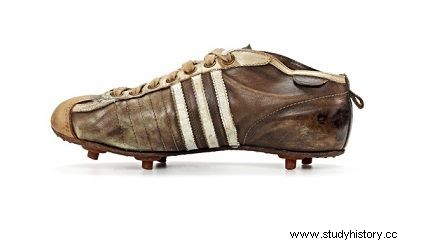
In these adidas cleats, the German national team won the World Cup in 1954
Rudolph could not let go of this insult. For years, he had argued that his brother would not even sell a sole without his trading skills. Puma launched a counteroffensive, the most important point of which was the traffic jams "Atom". They were offered to many players, advertisements and announcements were placed in the press. However, the world champions played in the shoes of the second Dassler. No, even the best-planned marketing campaign was able to challenge this argument.
In 1956, Adi's son Horst was sent to practice at the Melbourne Olympics. He was supposed to learn the rules of the game, and at the same time try to get new customers for Adidas. The then twenty-year-old boy went a step further. What did he do?
Well, the Australian port administration withheld all sporting goods that came from Germany. Horst knew English, so he persuaded American athletes to help. They wrote numerous petitions to officials asking for the "release" of the equipment - after all, they needed it. Managed to! Adidas products have arrived at the Olympic Village. Meanwhile, the cunning Horst made sure that Puma's equipment remained locked until the end of the Games.
State weight footwear
Rudolf Dassler could not leave it unanswered. Puma found another ground on which to prove its superiority. In the 1960s, the battlefield was ... athletics stadiums. Soldiers are athletes hungry for extra cash and gadgets.
In 1960, at the Olympics in Rome, German sprinter Armin Hary took part in the final of the 100-meter race. The prestigious and media discipline gave the people of "Rudy" a thought. Hary, who had always used Adidas equipment so far, was bribed by them. As if that was not enough, running in shoes manufactured by Puma, he won!
Adolf was furious. In addition, it was aggravated by the situation that took place during the medal ceremony. The new Olympic champion, Hary, came in ... "Adi" footwear for his distinction. In this way, he wanted to kill two birds with one stone. Ba! He even demanded payment from the younger Dassler. Of course, he didn't get it. Bribes have become the new ammunition in the conflict.
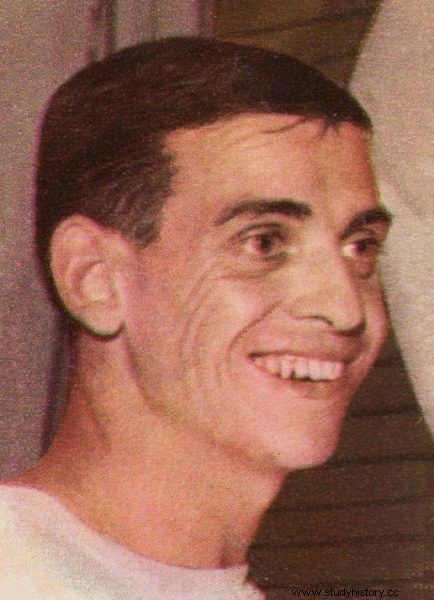
Armin Hary in 1960 at the Olympics in Rome took part in the final of the 100 meter race in Puma shoes, despite an earlier contract with Adidas.
Rudolf followed the blow and the next "number" got his brother at the European Athletics Championships in Budapest in 1966. His man donated $ 500 to East German runner Jürgen May. The competitor, competing in Puma shoes, was to hand over money to his teammate, Jürgen Haase, who was running in Adidas shoes. This one was supposed to change the hardware supplier.
The whole operation could have been a success, had it not been for the vigilance of Adolf's staff, who realized everything and when Haase became the European champion in the 10,000 meters run, alerted the GDR government. A political scandal erupted that resulted in May's being fired and fired from his job. Haase was pardoned - probably only because he won the gold medal.
Advertising is a lever of trade
Perhaps Puma's most famous football "action" was Puma's behavior in the 1970 World Cup final. A few seconds before the first whistle in Brazil's match against Italy, the 'Canarinhos' pillar asked the referee to allow him to tie his shoes. This event was captured by cameras. The great footballer laced up shoes made in Rudolf's factory.
As if that were not enough, eighteen minutes later he opened the scoreboard, and after it ended, he enjoyed the title of the championship. The whole event was seen by millions of fans around the world, and the footballer won 120,000 dollars for - as it turned out later - the non-accidental lacing of his shoes.
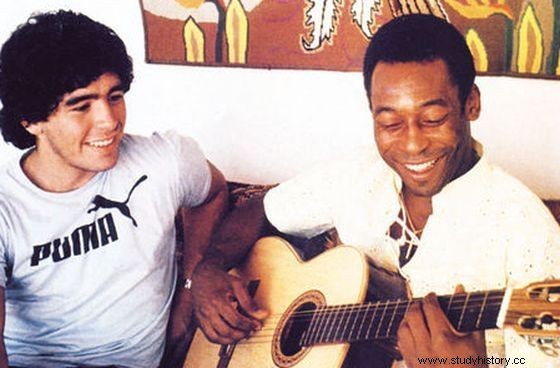
Pele and Diego Maradona, the soccer legends that represented Puma.
Dragging athletes to their side had become a standard practice for both companies. The Dassler brothers fought each other for the rest of their lives. The older one died in 1974, the younger one four years later. Some say that the men met with each other, perhaps even in their old age, they decided to reconcile, but they never officially said it. After all, on the basis of their conflict, for several dozen years, both companies built their image and power.
Only in September 2009, factory workers played an amicable football match and shook hands. Two feuding camps, on the two opposite banks of the Aurach River, finally ended the dispute.
Bibliography:
- Thomas Kistner, Fifa mafia , SQN 2014.
- Daniel Karaś, Norbert Tkacz, David Zeisky, Untitled champions. The legend of the Golden Eleven , Arena 2018.
- Łukasz Tomys, Adidas vs Puma. Two brothers, two companies. Adolf and Rudolf Dassler, Łukasz Tomys Publishing 2017.
- Małgorzata Zdziechowska, War of shoes , "Wprost" No. 3/2006.
- Jennifer Barret, The History of Adidas and Puma , "Newsweek" [accessed April 13, 2008].
- Robert Kuhn, Thomas Thiel, Shoes and Nazi Bazookas. The Prehistory of Adidas and Pumas , "Spiegel International" [accessed October 3, 2020].
